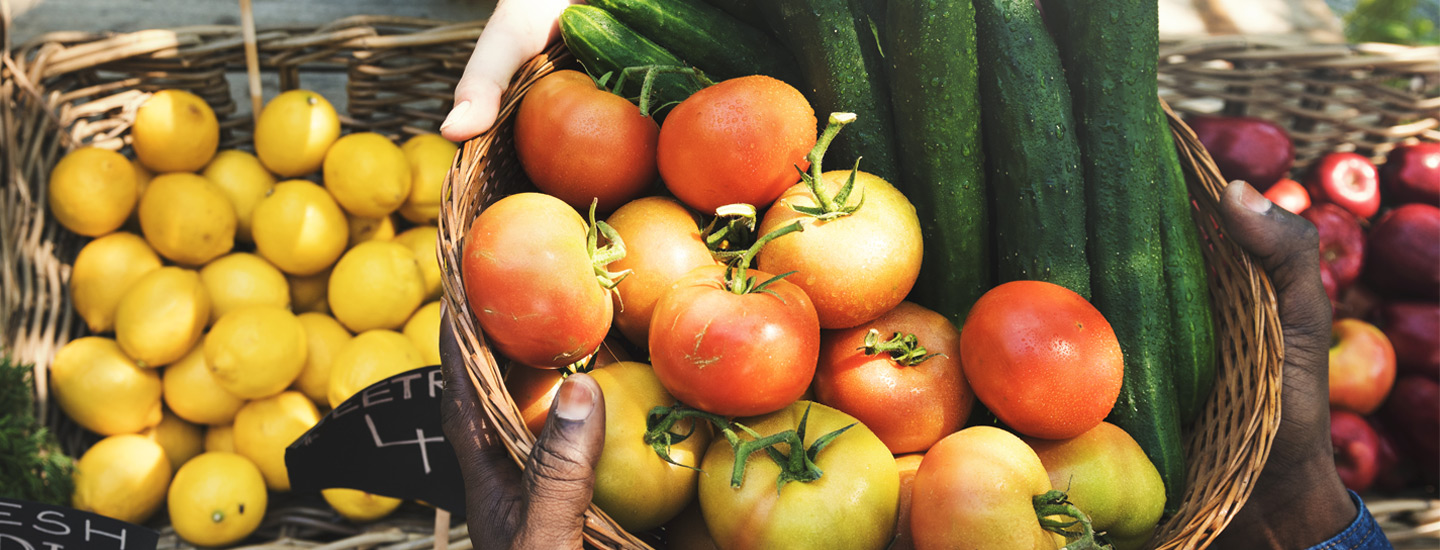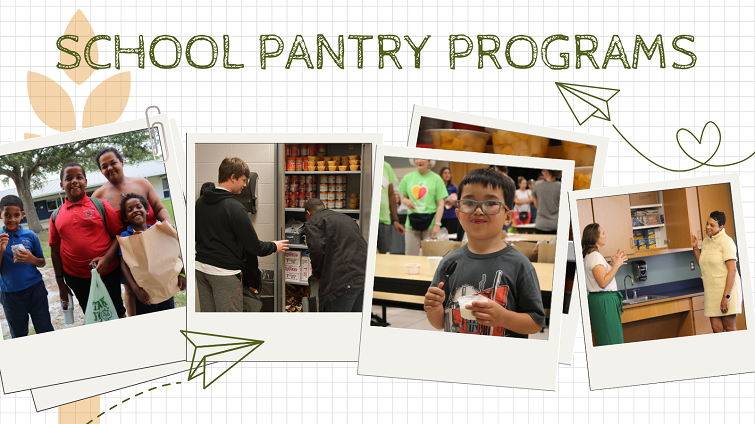1 in 5 Florida children are food insecure.
When organizations develop feeding programs to help these children, it’s helping part of the problem. A hungry child comes from a hungry family.
Our food banks are not just fighting hunger, they are finding solutions so children and their families are able to access healthy, nutritious food when they need to. Through enhanced School Pantries, we can provide resources where children and their families frequent every day. We can take the stigma out of food pantries and give support to young families who need it most.
Here’s the recap of how several of our food banks work with local schools to develop these resources and how it affects the community as a whole.
Harry Chapin Food Bank
Harry Chapin Food Bank’s school pantry program directly affects the students in Lee County, providing pallets of food and a great deal of hope. See the story firsthand from the students and social workers affected by the Hungry Bull Food Pantry at Harns Marsh Middle:
Second Harvest of the Big Bend
“We also love the School Markets because it allows for the entire family to be served, not just the children.”
The team at Second Harvest of the Big Bend, which now has over 20 school markets, explained that the markets help fight hunger by providing children and their families with a reliable source of healthy, accessible food to allow them to be successful in the classroom. This program places food pantries in local schools to provide access to fresh fruits and vegetables, meat or protein options, and pantry staples.
“The School Market program supports students and their families by ensuring access to nutritious food, helping to alleviate food insecurity. It also creates a safety net for children who might otherwise go without meals in the evenings or on weekends. Teachers benefit from the program by having an accessible resource to discreetly provide extra food for students in need, helping to promote student well-being. Additionally, it strengthens the relationship between schools and families, fostering a caring and supportive community.”
The school markets, like the one at Pineview Elementary which serves about 20 households a month (pictured here), are choice pantries. They are advertised to the entire school and the principal is always letting their staff know about the pantry and how to utilize it. Because the pantry aims to serve the entire family, the staff and teachers offer the pantry resources to their students and their families.
All Faiths Food Bank
“The school pantries are a lifeline for families. The schools are trusted by parents, and many staff members who they are already comfortable with work the pantries. The pantries are a one-stop-shop for families to pick up their children and their groceries for the week, so there is no need to make the extra trip to a mobile or partner agency.”
All Faiths Food Bank has 22 school pantry locations across their region, providing their schools to have both school pantry programs and backpack programs if they so wish.
Feeding the Gulf Coast
“This program is a blessing to the families that participate. The food items are nutritious and delicious. They are items that kids like to eat, and it makes them feel on a level with their peers.”
The School Pantry Program at Feeding the Gulf Coast provides students with easy access to nutritious, nonperishable, and easily consumed food and other necessities. The program allows children dignity, privacy, and comfort in selecting food and other items which the student and their family need.
Teachers, counselors, and school nurses identify students based on their level of need and as they demonstrate signs of hunger in the classroom. Students can visit the school pantry weekly to select nutritious, easy to prepare food, as well as toiletries for personal use.
A teacher from Sims Middle School, one of Feeding the Gulf Coast’s Florida pantries, explained how one family has changed since using the pantry, with the children seeing improved grades, missing less school, and better behavior. “One family in particular had difficulty paying bills and feeding the family of 5. With the implementation of the pantry service, they could feed the family and use the money they saved from having to buy groceries to turn the water back on.”
Feeding the Gulf Coast runs 35 school pantries in Florida, reaching over 5,000 children in their service area. One such school was Ransom Middle School, where the pantry organizer noted: “One of my success stories is a family living in a hotel. The student was not coming to school because he was embarrassed and lacked food. With this program, I was able to help his family. The student started coming to school, did his recovery classes, and was able to get in the right grade. The student stated that he was worried about not having anything to eat because his mom was making sure that she tried to keep a roof over their heads. Mom and the student were so grateful food was one less thing they had to worry about. This program is a blessing. That student is now in high school and living in their own home.”
To see more about the School Pantry Program at Feeding the Gulf Coast, check out this video:


